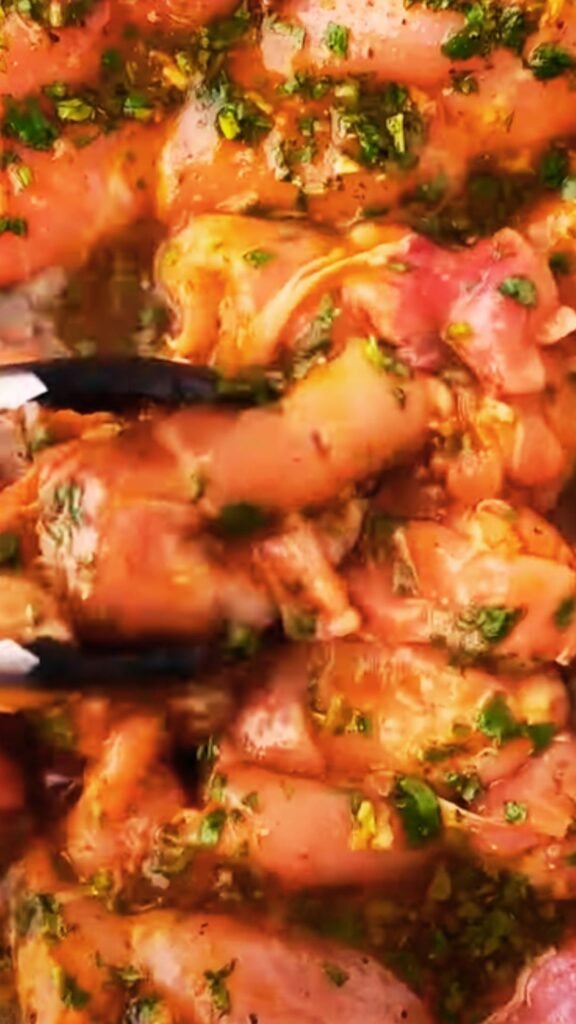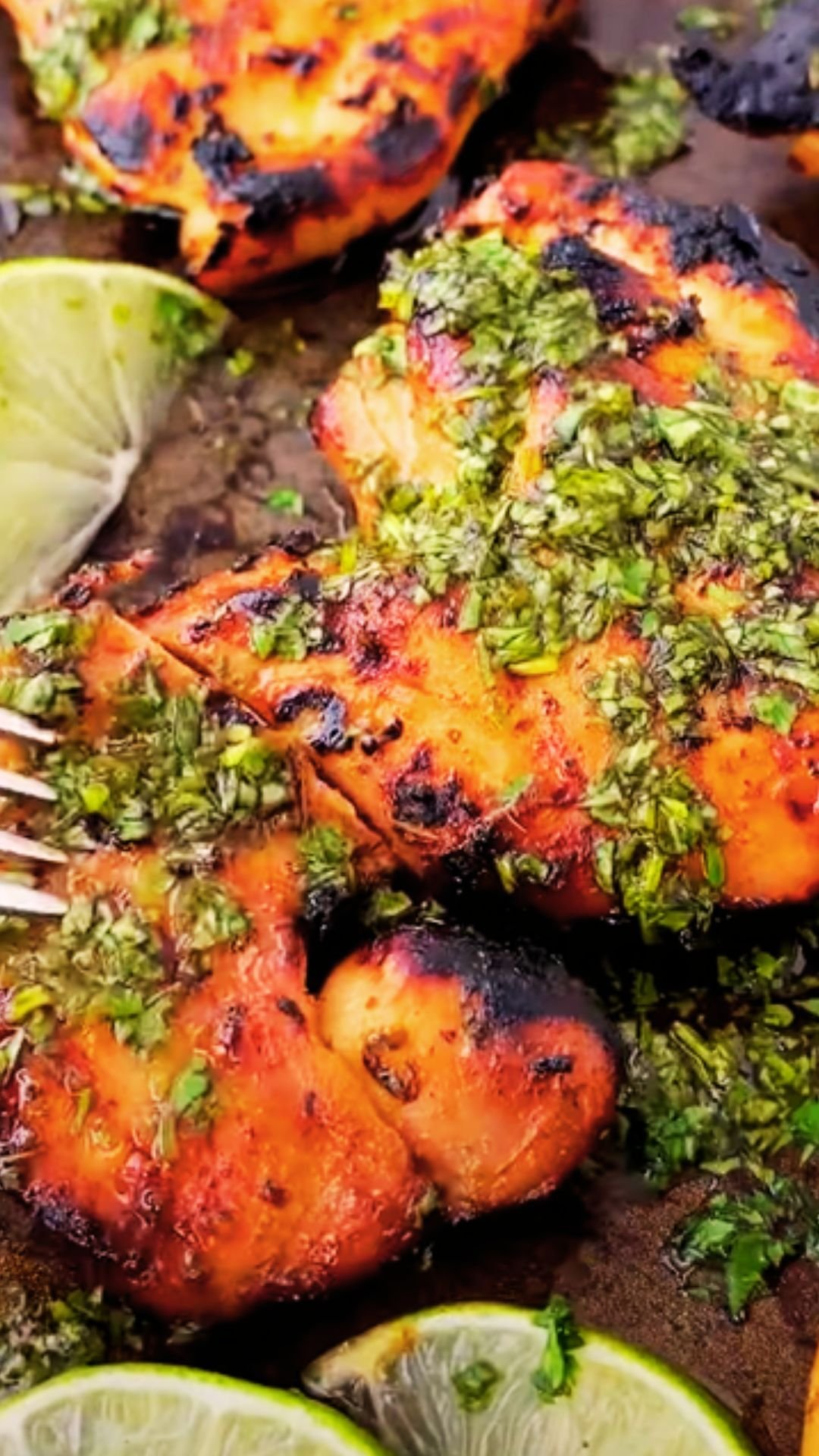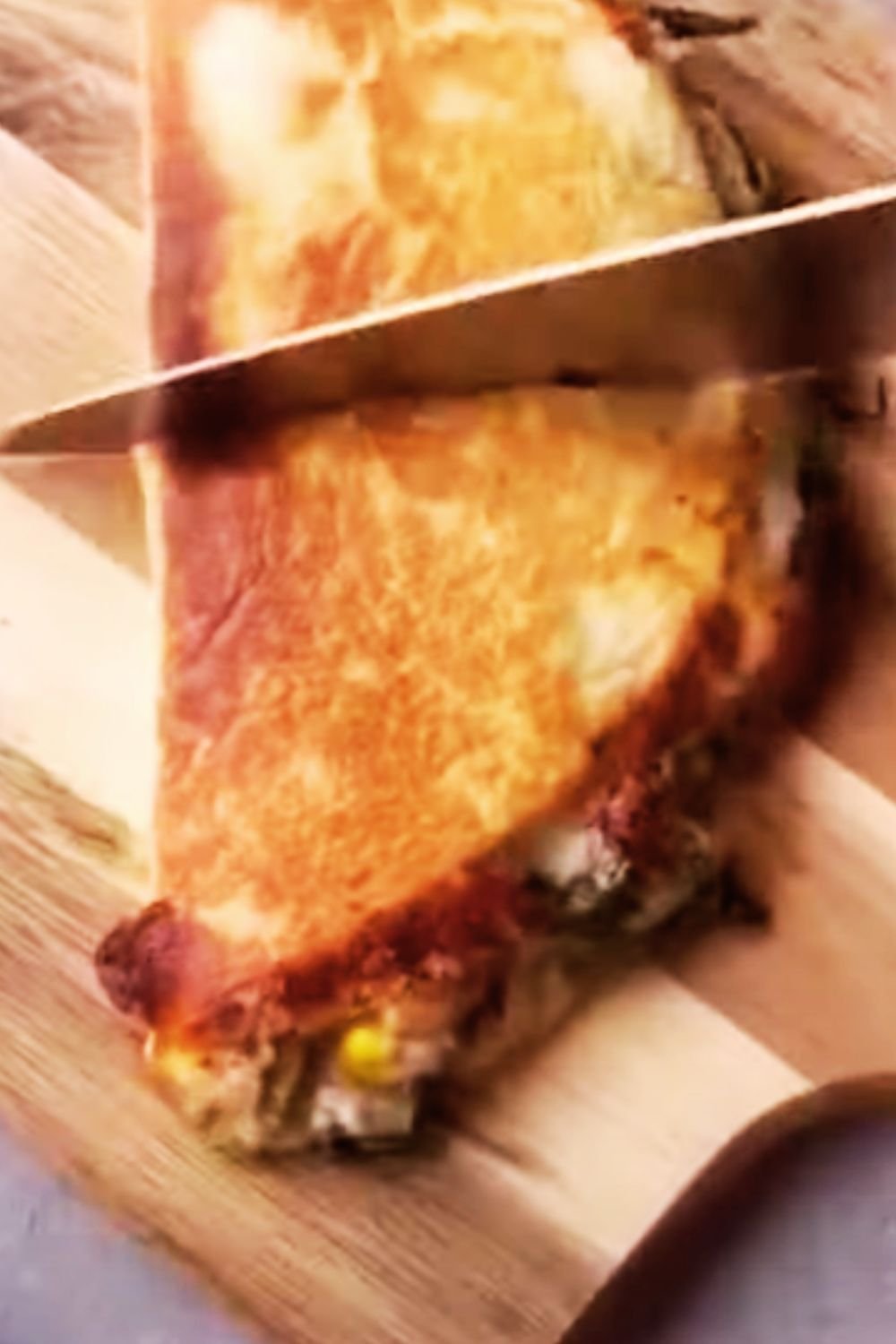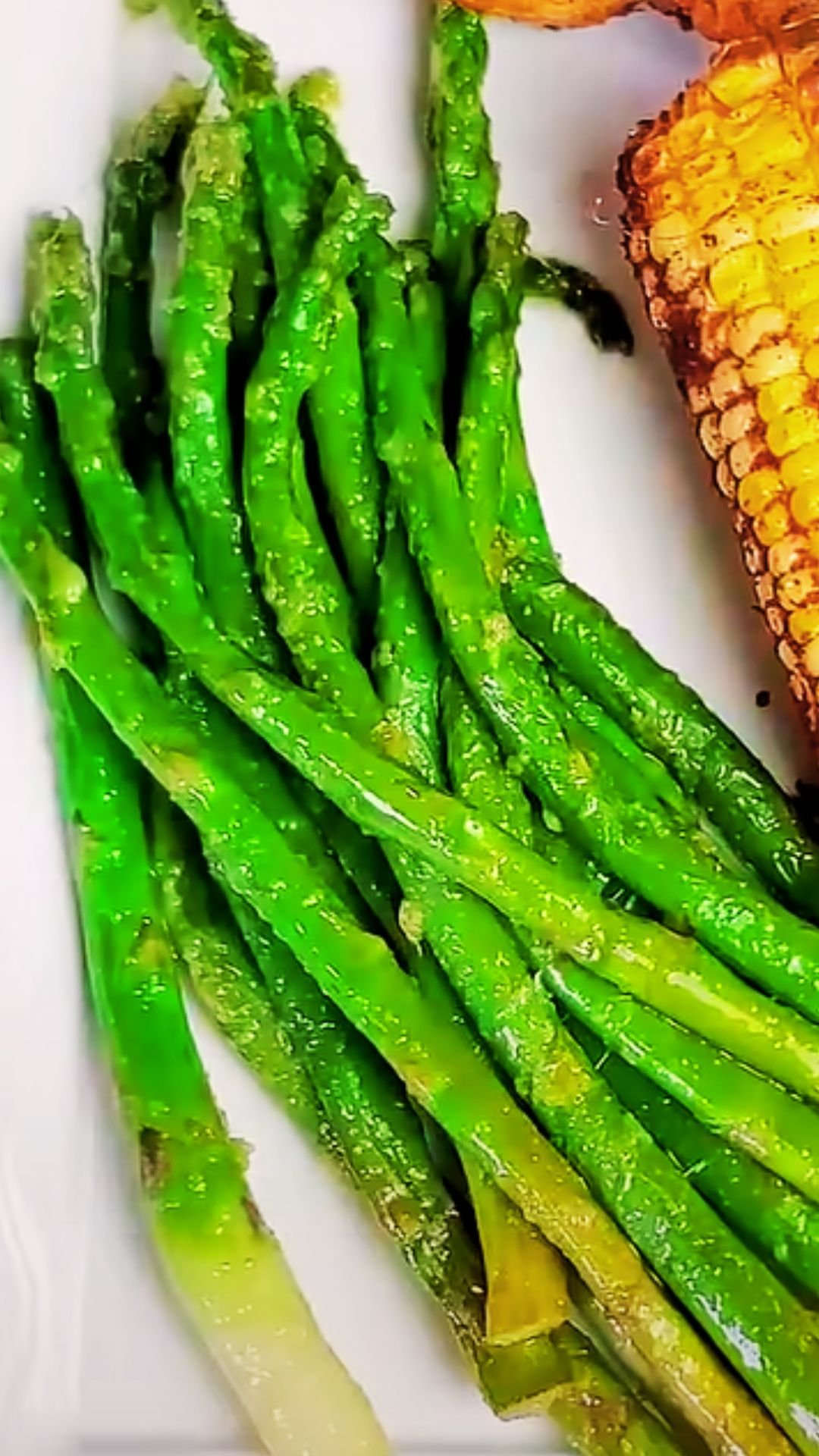When I first discovered this honey lime chicken recipe, I was skeptical that something so simple could taste so extraordinary. But after one bite of that perfectly caramelized chicken with its sweet-tangy glaze, I was completely hooked. This stovetop version has become my go-to weeknight dinner because it delivers restaurant-quality flavors in just 30 minutes using ingredients I always have on hand.
The beauty of this dish lies in its perfect balance of flavors. The honey provides natural sweetness that caramelizes beautifully when cooked, while fresh lime juice adds that bright, zesty kick that prevents the dish from becoming cloying. Combined with aromatic garlic and a hint of soy sauce for umami depth, this chicken creates a symphony of tastes that will have your family asking for seconds.
What makes this recipe particularly special is its versatility and forgiving nature. Whether you’re cooking for picky eaters or adventurous food lovers, this honey lime chicken hits all the right notes. I’ve served it to countless dinner guests, and it never fails to impress. The glaze creates an gorgeous golden coating that looks as amazing as it tastes.
Understanding the Key Components
Before diving into the cooking process, let me break down what makes each ingredient essential to this recipe’s success:
Chicken Thighs vs. Breasts : Bone-in, skin-on chicken thighs are my preferred choice because they stay incredibly moist and develop better flavor during cooking. The skin becomes beautifully crispy while the meat remains tender. However, boneless chicken breasts work wonderfully too, though they require more careful timing to prevent overcooking.
Honey Selection : The type of honey you choose significantly impacts the final flavor. I prefer using wildflower or clover honey for their mild, balanced sweetness. Avoid strongly flavored varieties like buckwheat honey, which can overpower the delicate lime notes.
Lime Juice Quality : Fresh lime juice is absolutely non-negotiable here. Bottled lime juice lacks the bright, zesty flavor that makes this dish shine. I always juice my limes just before cooking to capture maximum freshness and potency.
Garlic Preparation : Minced fresh garlic provides the aromatic foundation for our glaze. I’ve found that crushing the garlic with the flat side of my knife before mincing releases more flavor compounds than simply chopping.
Soy Sauce Role : A small amount of soy sauce adds crucial umami depth without making the dish taste Asian. It enhances the savory elements and helps balance the sweetness of the honey.
Essential Ingredients and Measurements
| Ingredient | Amount | Purpose | Substitution Options |
|---|---|---|---|
| Chicken thighs (bone-in, skin-on) | 6-8 pieces (3 lbs) | Main protein | Boneless thighs, chicken breasts |
| Honey | 1/3 cup | Primary sweetener | Maple syrup, agave nectar |
| Fresh lime juice | 1/4 cup (4-5 limes) | Acid balance | Lemon juice (reduce to 3 tbsp) |
| Lime zest | 2 tablespoons | Aromatic oils | Lemon zest |
| Garlic cloves | 4 large, minced | Flavor base | Garlic powder (1 tsp) |
| Soy sauce | 2 tablespoons | Umami depth | Coconut aminos, tamari |
| Olive oil | 2 tablespoons | Cooking fat | Avocado oil, vegetable oil |
| Salt | 1 teaspoon | Seasoning | Sea salt, kosher salt |
| Black pepper | 1/2 teaspoon | Spice | White pepper |
| Red pepper flakes | 1/4 teaspoon | Heat (optional) | Cayenne pepper |
| Fresh cilantro | 1/4 cup chopped | Garnish | Green onions, parsley |
Step-by-Step Cooking Instructions
Preparation Phase
First, I remove the chicken from the refrigerator about 20 minutes before cooking to allow it to come to room temperature. This ensures even cooking throughout. While the chicken warms, I prepare all my ingredients because this recipe moves quickly once cooking begins.
I pat each piece of chicken completely dry with paper towels, then season generously with salt and pepper on both sides. This step is crucial for achieving that golden, crispy skin we’re after. Moisture is the enemy of crispy skin, so don’t skip the drying process.
In a small bowl, I whisk together the honey, lime juice, lime zest, minced garlic, and soy sauce until well combined. The mixture might look slightly separated initially, but it will come together beautifully during cooking. I keep this glaze nearby and ready to use.
Cooking Process
I heat my large, heavy-bottomed skillet or cast-iron pan over medium-high heat. Once hot, I add the olive oil and swirl to coat the bottom evenly. The oil should shimmer but not smoke.
Carefully placing the chicken pieces skin-side down in the pan, I resist the urge to move them immediately. This is where patience pays off tremendously. I let the chicken cook undisturbed for 6-8 minutes, allowing the skin to develop that gorgeous golden-brown color and release naturally from the pan.
When the skin has properly caramelized, I flip the chicken pieces using tongs. The skin should be deeply golden and crispy. I continue cooking for another 5-6 minutes on the second side until the internal temperature reaches 165°F (74°C) when measured with a meat thermometer.
Glazing Technique
Here’s where the magic happens. I reduce the heat to medium-low and pour the honey-lime mixture over the chicken. The glaze will bubble and sizzle dramatically – this is exactly what we want. Using a spoon, I carefully baste the chicken with the glaze, spooning it over each piece repeatedly.
As the glaze cooks, it transforms from a thin liquid into a thick, glossy coating that clings beautifully to the chicken. This process takes about 3-4 minutes of constant basting. The key is maintaining gentle heat to prevent the honey from burning while allowing it to caramelize properly.

Cooking Time and Temperature Guide
| Cooking Stage | Temperature | Time | Visual Cues |
|---|---|---|---|
| Initial searing | Medium-high | 6-8 minutes | Golden, crispy skin |
| Second side | Medium-high | 5-6 minutes | Internal temp 165°F |
| Glazing | Medium-low | 3-4 minutes | Thick, glossy coating |
| Resting | Off heat | 5 minutes | Juices redistribute |
Nutritional Information
Understanding the nutritional profile of this dish helps with meal planning and dietary considerations:
| Nutrient | Per Serving (1 thigh) | Daily Value % |
|---|---|---|
| Calories | 285 | 14% |
| Protein | 28g | 56% |
| Carbohydrates | 12g | 4% |
| Sugars | 11g | – |
| Fat | 14g | 18% |
| Saturated Fat | 4g | 20% |
| Sodium | 520mg | 23% |
| Vitamin C | 8mg | 9% |
| Iron | 1.2mg | 7% |
Based on 6 servings from the complete recipe
Serving Suggestions and Pairings
This honey lime chicken pairs beautifully with a variety of sides that complement its sweet-tangy profile. I’ve experimented with numerous combinations over the years, and these pairings consistently deliver exceptional results.
For grain-based sides, I love serving this chicken over fluffy jasmine rice or quinoa. The grains absorb the extra glaze beautifully, creating a cohesive dish. Coconut rice adds an extra layer of tropical flavor that works wonderfully with the lime notes.
Vegetable companions should provide textural contrast and fresh flavors. Roasted asparagus, steamed broccoli, or sautéed green beans all work excellently. I particularly enjoy serving it with a crisp cucumber salad dressed with rice vinegar and sesame oil – the coolness balances the rich chicken perfectly.
For a more substantial meal, I often prepare roasted sweet potatoes or regular potatoes. The natural sweetness of sweet potatoes harmonizes beautifully with the honey glaze, while regular potatoes provide a neutral backdrop that lets the chicken shine.
Storage and Reheating Guidelines
Proper storage ensures you can enjoy leftovers without compromising flavor or food safety. I’ve found that this chicken actually improves slightly after a day in the refrigerator, as the flavors have more time to meld together.
Refrigerator Storage : Store leftover chicken in an airtight container for up to 4 days. I always let the chicken cool completely before refrigerating to prevent condensation from making the skin soggy.
Freezer Storage : This chicken freezes exceptionally well for up to 3 months. I wrap individual pieces in plastic wrap, then place them in freezer bags with the air removed. Label with the date and contents for easy identification.
Reheating Methods : For best results, I reheat in a 350°F oven for 15-20 minutes until heated through. This method helps maintain the crispy skin. Microwave reheating works for convenience but will soften the skin considerably.
Troubleshooting Common Issues
Even experienced cooks encounter challenges with this recipe occasionally. Here are solutions to the most common problems I’ve encountered:
Burnt Glaze : If your glaze starts burning, immediately reduce the heat and add a tablespoon of water or chicken broth to loosen it. The key is maintaining gentle heat during the glazing phase.
Soggy Skin : This usually results from not drying the chicken properly before cooking or overcrowding the pan. Always pat dry thoroughly and cook in batches if necessary.
Thin Glaze : If your glaze won’t thicken, increase the heat slightly and continue basting. Sometimes the initial honey-lime mixture needs more cooking time to reach proper consistency.
Overcooked Chicken : Using a meat thermometer prevents this issue entirely. Remove from heat the moment the internal temperature reaches 165°F, as it will continue cooking slightly from residual heat.
Recipe Variations and Adaptations
One of the aspects I love most about this recipe is its adaptability. Over the years, I’ve created numerous variations that cater to different tastes and dietary needs.
Spicy Version : Add 1-2 tablespoons of sriracha or your favorite hot sauce to the glaze mixture. The heat pairs beautifully with the sweet-tangy base flavors.
Herb-Crusted Variation : Before glazing, sprinkle the chicken with chopped fresh thyme or rosemary. These herbs add an earthy complexity that elevates the dish significantly.
Coconut Lime Version : Replace half the honey with coconut cream and add toasted coconut flakes as garnish. This creates a tropical twist that’s absolutely divine.
Low-Sodium Adaptation : Use low-sodium soy sauce or coconut aminos, and reduce the added salt by half. The natural flavors still shine through beautifully.
Questions and Answers
Q: Can I use boneless chicken breasts instead of thighs?
Absolutely! Boneless chicken breasts work wonderfully, though they require slightly adjusted cooking times. Cook for 5-6 minutes per side, and watch the internal temperature carefully to avoid overcooking. Breasts can become dry if cooked too long, so I recommend using a meat thermometer for best results.
Q: What if I don’t have fresh limes available?
While fresh lime juice is strongly preferred, you can substitute with fresh lemon juice in a pinch. Use about 3 tablespoons instead of 1/4 cup, as lemon juice is more acidic. The flavor profile will be slightly different but still delicious. Avoid bottled citrus juices if possible, as they lack the bright, fresh taste that makes this dish special.
Q: Can I make this recipe ahead of time?
You can prepare the glaze mixture up to 24 hours in advance and store it covered in the refrigerator. However, I recommend cooking the chicken fresh for best texture and flavor. The crispy skin is at its peak immediately after cooking, though leftovers are still quite tasty when properly reheated.
Q: Is there a way to make this recipe healthier?
Several modifications can reduce calories and increase nutritional value. Remove the skin before cooking to significantly reduce fat content, though you’ll lose the crispy texture. You can also reduce the honey to 1/4 cup or substitute with a natural low-calorie sweetener. Adding more vegetables to your plate and reducing portion sizes are other effective strategies.
Q: What’s the best way to get crispy skin every time?
The secret to crispy skin lies in three key factors: completely dry chicken before cooking, adequate heat, and patience. Pat the chicken dry with paper towels, let it sit uncovered in the refrigerator for 30 minutes if time allows, and resist the urge to move it too early in the cooking process. The skin will release naturally when it’s properly caramelized.
Q: Can I double this recipe for a larger crowd?
Yes, but you’ll need to cook in batches to avoid overcrowding your pan. Overcrowding leads to steaming rather than proper searing, which prevents crispy skin development. Cook half the chicken first, keep it warm in a low oven, then repeat with the remaining pieces. You can make a double batch of glaze and divide it between the two cooking sessions.
Q: What wine pairs well with this dish?
For those who enjoy wine pairings, this honey lime chicken works beautifully with several options. A crisp Sauvignon Blanc or Pinot Grigio complements the citrus notes perfectly, while a light Riesling enhances the honey sweetness. For red wine lovers, a light Pinot Noir provides nice contrast without overwhelming the delicate flavors.
Q: How do I know when the glaze is the right consistency?
The perfect glaze should coat the back of a spoon and cling to the chicken without being too thick or sticky. It typically takes 3-4 minutes of gentle cooking and constant basting to achieve this consistency. If it becomes too thick, add a tablespoon of water or chicken broth. If it’s too thin, continue cooking while basting frequently.
This honey lime chicken has earned its place as one of my most requested recipes for good reason. The combination of simple ingredients, straightforward technique, and exceptional results makes it perfect for both weeknight dinners and special occasions. The sweet-tangy glaze creates an irresistible coating that transforms ordinary chicken into something truly memorable.
Every time I make this dish, I’m reminded why simple recipes often produce the most satisfying results. The key lies not in complexity, but in understanding how each ingredient contributes to the final flavor profile and executing each step with care and attention to detail.
Whether you’re cooking for family or entertaining guests, this honey lime chicken delivers consistent, crowd-pleasing results that will have everyone asking for the recipe. The beautiful golden color, incredible aroma, and perfect balance of flavors make it a true winner in my kitchen repertoire.


